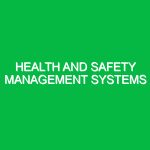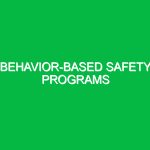In today’s fast-paced work environments, ensuring the safety and well-being of employees is paramount. Workplace Safety Audits serve as a crucial tool in the Health, Safety, and Environment (HSE) domain, enabling organizations to identify hazards, assess risks, and implement effective safety measures. These audits are not merely checklists; they are comprehensive evaluations that can transform workplace culture and protect personnel. This article will delve into the significance of Workplace Safety Audits, the potential hazards they address, best practices, and the regulations that guide them.
Understanding Workplace Safety Audits
Workplace Safety Audits are systematic examinations of an organization’s safety management system. They aim to identify areas of non-compliance with safety regulations, assess the effectiveness of safety programs, and highlight opportunities for improvement. These audits typically involve reviewing policies, practices, and conditions to ensure they align with industry standards and legal requirements.
To illustrate the importance of these audits, consider the case of a manufacturing company that conducted a safety audit after a series of minor injuries had been reported. The audit revealed not only the physical hazards within the plant but also gaps in employee training. By addressing these issues, the company significantly reduced workplace injuries, enhanced employee morale, and improved productivity. This example exemplifies how a proactive approach to safety can lead to substantial benefits across an organization.
Identifying Hazards and Risks
Every workplace has its unique set of hazards. Recognizing these risks is the first step in the audit process. Common hazards include:
Physical Hazards
These are perhaps the most visible and include anything from machinery with moving parts to slippery floors. For instance, in a construction environment, falling objects pose a significant risk. Proper barriers and helmets can mitigate these risks, but their effectiveness depends on consistent enforcement and training.
Chemical Hazards
Exposure to hazardous chemicals can lead to severe health issues, including respiratory problems and skin irritations. Industries that handle chemicals must have Material Safety Data Sheets (MSDS) available and ensure proper storage and labeling of substances. An audit can highlight gaps in these areas, prompting necessary changes.
Ergonomic Hazards
These hazards arise from poor workplace design that leads to musculoskeletal disorders. Simple adjustments, such as ergonomic chairs or workstation layouts, can significantly reduce these risks. A safety audit can help identify such adjustments needed to enhance employee comfort and productivity.
Behavioral Hazards
Human behavior plays a crucial role in workplace safety. Negligence or lack of awareness can lead to accidents. Regular training and awareness programs can counteract these risks. Audits can assess the effectiveness of existing training programs and suggest improvements.
Safety Precautions and Best Practices
Implementing safety precautions based on the findings from Workplace Safety Audits is essential for fostering a safe work environment. Here are some best practices:
Regular Training and Development
Training is the backbone of workplace safety. Regularly scheduled training sessions ensure that employees are aware of the hazards they may encounter and understand how to mitigate risks effectively. For instance, a retail store that experiences frequent slip-and-fall incidents might benefit from training on proper cleaning protocols and hazard reporting.
Clear Communication of Safety Protocols
Effective communication is vital for ensuring that employees understand safety protocols. This can involve everything from signage to regular safety meetings. Using visuals, such as infographics, can help convey critical information more effectively.
Implementation of Safety Equipment
Providing the right personal protective equipment (PPE) is non-negotiable. Whether it’s gloves, helmets, or eye protection, employees should be equipped to handle their tasks safely. Regular audits can help ensure that the equipment is not only available but also in good condition.
Creating a Safety Culture
Fostering a workplace culture that prioritizes safety encourages employees to take ownership of their safety and the safety of their colleagues. Initiatives like safety committees or recognition programs for safe practices can engage employees in the process. For instance, a company that introduced a “safety champion” program saw increased participation in safety initiatives, leading to a measurable decrease in incidents.
Regulations and Standards Governing Workplace Safety Audits
Workplace Safety Audits are influenced by a range of regulations and standards that guide best practices in health and safety. Some key regulations include:
Occupational Safety and Health Administration (OSHA)
In the United States, OSHA sets and enforces standards to ensure safe working conditions. Employers are required to conduct audits that align with OSHA regulations, identifying areas where they may fall short and implementing necessary changes.
International Organization for Standardization (ISO) 45001
This is a global standard for occupational health and safety management systems. It provides a framework for organizations to improve employee safety, reduce workplace risks, and create better, safer working conditions. Companies seeking certification must conduct thorough audits to ensure compliance with ISO 45001 requirements.
Local Regulations
In addition to national and international standards, local regulations may apply. These can vary significantly depending on the jurisdiction and industry. Staying informed about relevant local laws is crucial for compliance and effective safety management.
Conclusion
Workplace Safety Audits are a fundamental aspect of maintaining health and safety standards in any organization. By systematically identifying hazards and implementing best practices, organizations can not only comply with regulations but also create a culture of safety that protects employees and enhances productivity. As industries evolve, the importance of these audits will only grow, making them a vital investment in the well-being of the workforce. Ultimately, regular audits are not just about compliance; they are about creating a safer, healthier, and more productive work environment for everyone.


